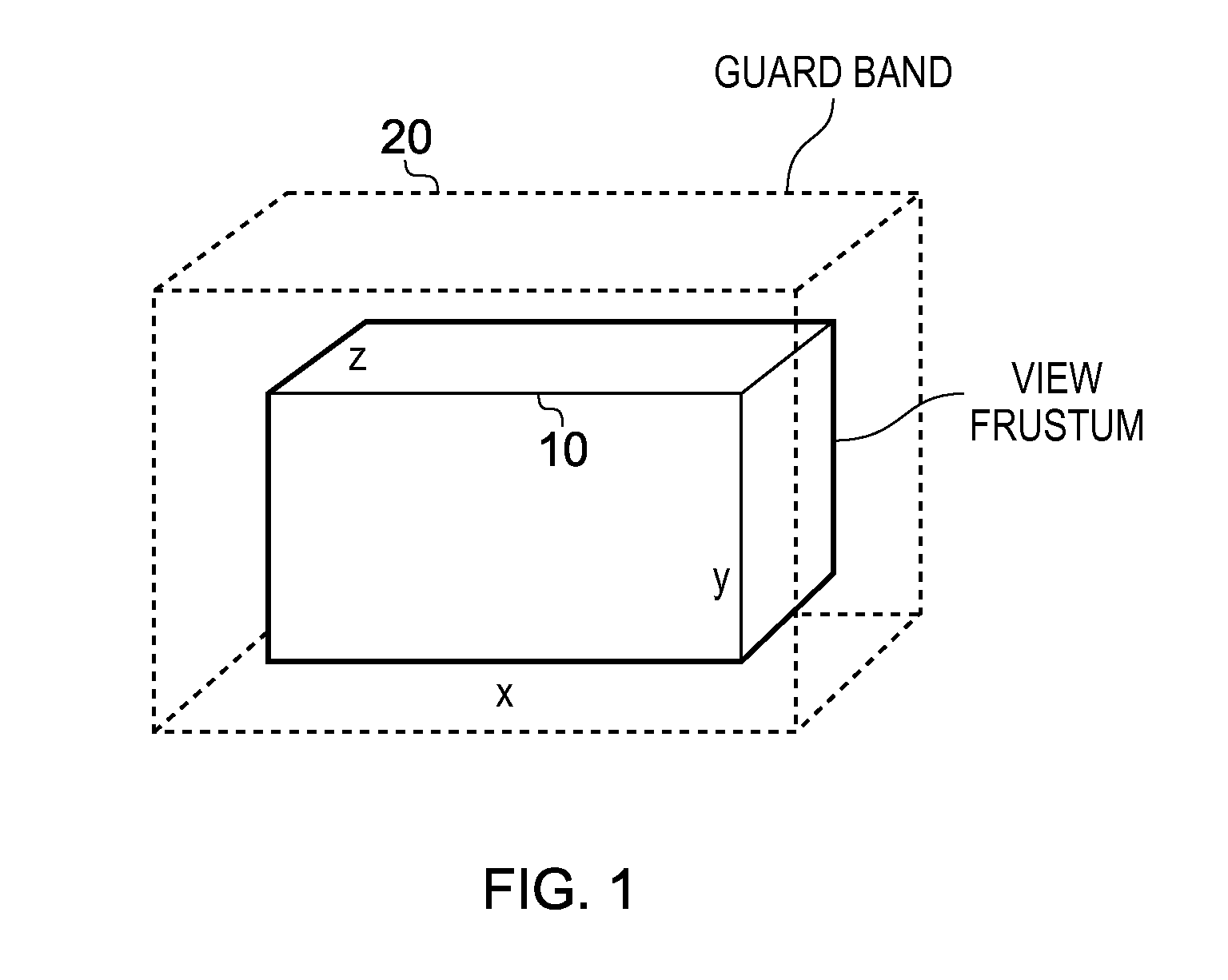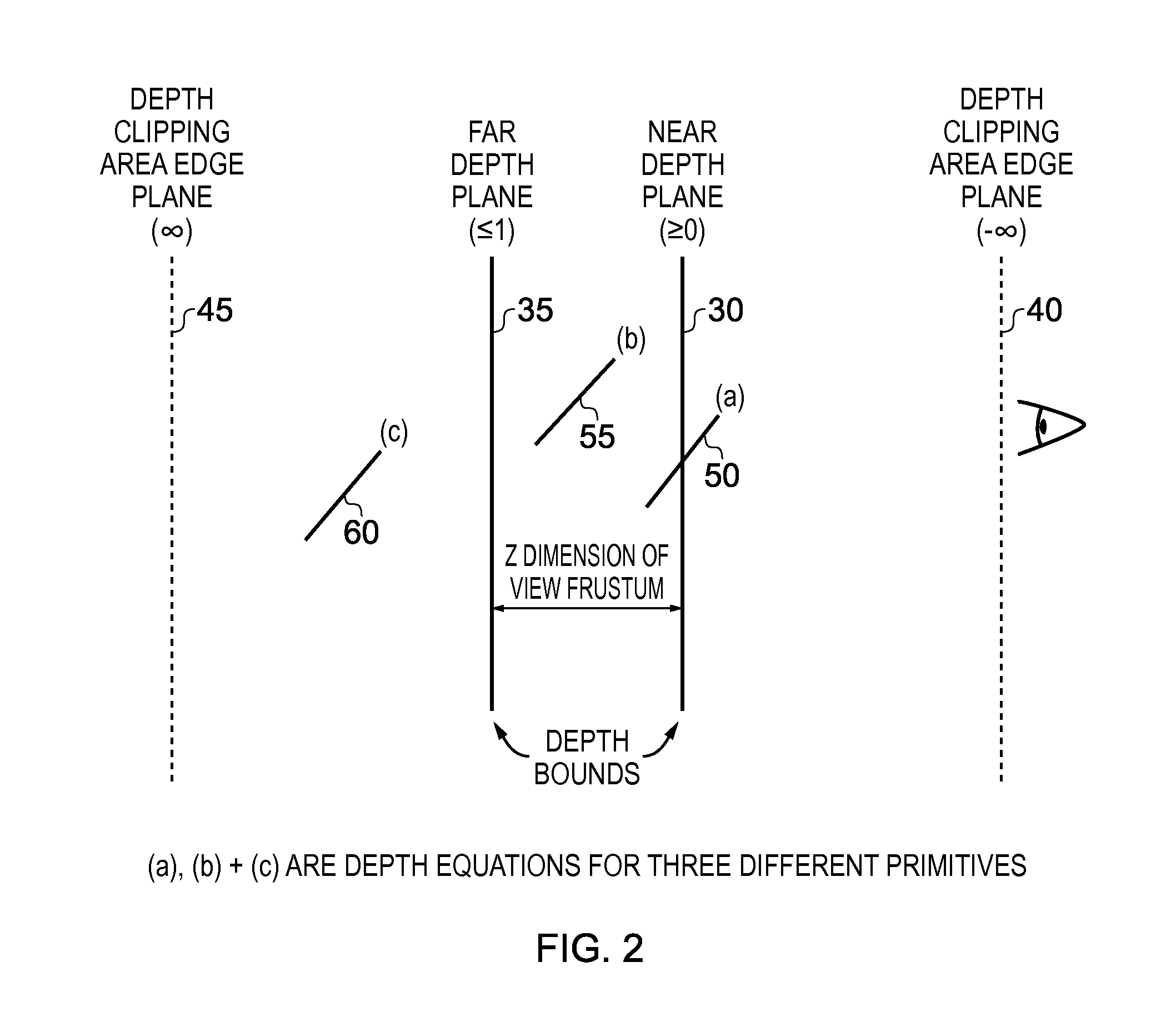Apparatus and method for processing graphics primitives
a technology of primitives and apparatus, applied in the field of computer graphics, can solve the problems of significant impact on the area and power consumption of the circuitry, and achieve the effects of reducing the area and power consumption requirements, improving performance, and improving performan
- Summary
- Abstract
- Description
- Claims
- Application Information
AI Technical Summary
Benefits of technology
Problems solved by technology
Method used
Image
Examples
Embodiment Construction
[0041]FIG. 1 schematically shows a guard band arrangement provided in association with a view frustum. The view frustum 10 represents the three-dimensional volume within which primitives may need to be rendered for display. The top, left, bottom and right edge planes define a viewport (which typically corresponds to the size of the display screen), whilst near and far depth planes represent the front and back planes of the view frustum (representing the closest and furthest distances at which objects can appear).
[0042]As shown in FIG. 1, a guard band 20 can be provided around the view frustum 10 in order to reduce the amount of clipping required during initial geometry processing prior to rasterization and rendering. However, primitives that extend beyond the edges of the guard band would still need to be clipped. In order to avoid the requirement for such clipping, it is known to set the clipping area edge planes of the guard band to infinity, to effectively define an infinite guar...
PUM
 Login to View More
Login to View More Abstract
Description
Claims
Application Information
 Login to View More
Login to View More - R&D
- Intellectual Property
- Life Sciences
- Materials
- Tech Scout
- Unparalleled Data Quality
- Higher Quality Content
- 60% Fewer Hallucinations
Browse by: Latest US Patents, China's latest patents, Technical Efficacy Thesaurus, Application Domain, Technology Topic, Popular Technical Reports.
© 2025 PatSnap. All rights reserved.Legal|Privacy policy|Modern Slavery Act Transparency Statement|Sitemap|About US| Contact US: help@patsnap.com



